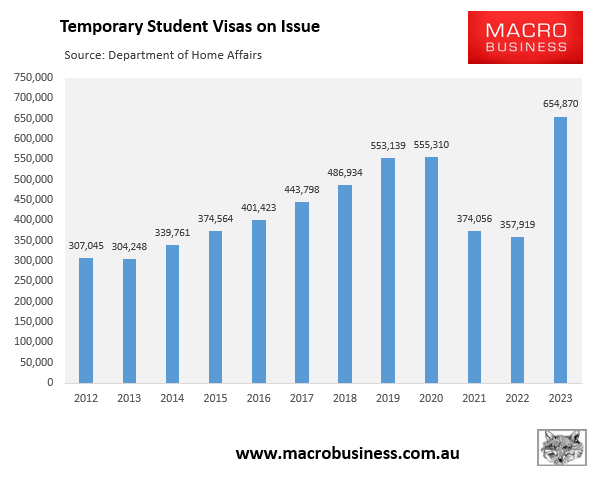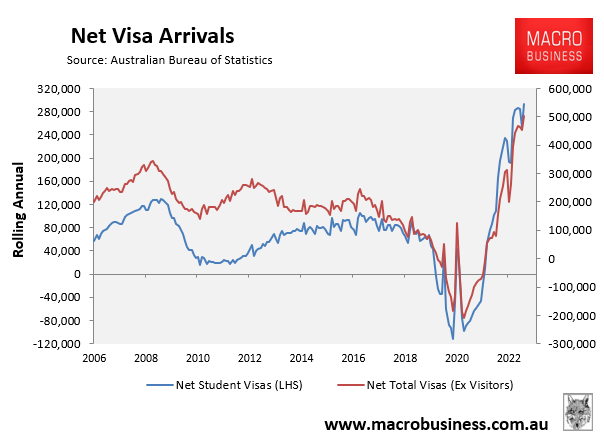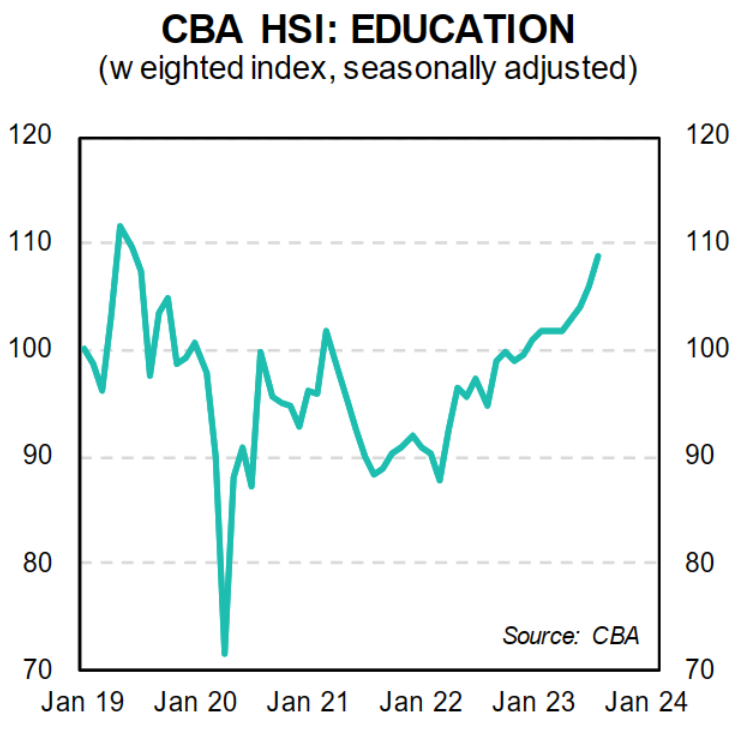International student numbers have boomed to an all-time high.
The latest Home Affairs visa data showed that 654,870 temporary student visas were on issue in July, around 100,00 more than the pre-pandemic peak:

The Australian Bureau of Statistics’ monthly visa data to July also reported a record 294,000 net student visa arrivals in the year to July, which drove the 503,000 increase in total net visa entries (excluding visitors):

New data released by CBA shows that spending on education rose strongly again in August, up 2.8% month-on-month, following a 1.9% gain in July.
The annual growth in education spending also surged to 14.7% in August, up from 9.0% in July:

CBA notes that “the largest increase in education spending in the year to August was for universities”, driven by “price increases and increased international students”.
Earlier this month, the ABS reported that education ‘exports’ hit an all-time high $21.8 billion in the six months to June because “the number of international students in Australia was above pre COVID-19 levels, for the first time since the beginning of the pandemic”.
Chief lobby group Universities Australia hailed “the highest quarterly results of all time” and claimed that this boom in fee revenue is “paying for the essential services all Australians rely on”.
I have explained repeatedly how the ABS’ international education export number is “statistical trickery”, because the ABS counts all spending by a student visa holder as an export, even though the majority is funded by income earned while living and working in Australia.
The inaccurate measurement of education exports gives the appearance that the industry is a significant earner for Australia, when in fact, the vast majority of this “export” income is produced within the country in low-skilled and low-paid jobs such as driving Uber.
In turn, politicians have catered to the sector by increasing student numbers and “export” volumes by expanding work rights and migration pathways.
While universities have enjoyed the financial windfall from the boom in international students, Australian residents have suffered from higher housing costs, crush-loaded infrastructure, lower wage growth, and lower productivity growth, which has eroded living standards for the nation’s younger and working populations, in particular.
International education is another example where the industry privatises the gains while the costs are socialised on the broader community.

